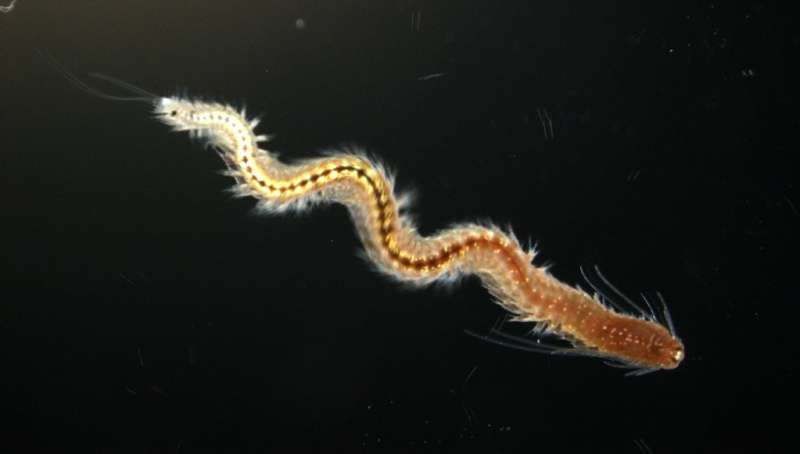Atoke worm of Platynereis dumerilii swimming in a petridish. Credit: Martin Gühmann/Wikimedia Commons/CC-BY-SA 4.0
A team of researchers from the European Molecular Biology Laboratory in Germany and the University of Exeter in the U.K. has conducted the first comprehensive study of the head chemosensory organ physiology in an annelid. In their paper published in the journal Royal Society Open Biology, the group describes their study of the brain of the marine worm Platynereis dumerilii and what they found.
P. dumerilii is one of the smallest animals that has a brain—it is a worm that lives in the sea and is related to the earthworm. Its head covering is nearly transparent and its neural cells are very similar to human neural cells—two characteristics that make the worm a good choice for learning more about how the human neural network operates and perhaps as a vehicle for studying brain diseases such as Alzheimer's. To learn more about how it works, the researchers used a fluorescent dye to highlight portions of the P. dumerilii brain as the worm went about its normal activities.
In their study, the researchers used six-day-old worms—the age when the worms' brain has fully developed. The study involved noting which parts of the brain were active during separate activities by combining calcium imaging and microfluidics as a means of recording neural activity. They note that the approach works because it can take advantage of the role that calcium ions play in the transmission of brain signals. They report that they were able to record action in the whole head of the worm, and found that the worm has four kinds of neural structures that sense stimuli—in this case, amino acids, esters, sugars and alcohols. They also found that antennae were the main chemically sensitive organs used by the worms
The work resulted in the first description of brain action in the worms using chemical stimulation. The researchers suggest that chemosensation is one of the important sensory mechanisms for marine annelids such as P. dumerilii. They also suggest that juvenile P. dumerilii can serve as a good model for studying anilid chemosensory systems.
More information: Thomas F. Chartier et al. Whole-head recording of chemosensory activity in the marine annelid Platynereis dumerilii, Open Biology (2018). DOI: 10.1098/rsob.180139
Journal information: Open Biology
© 2018 Science X Network
























